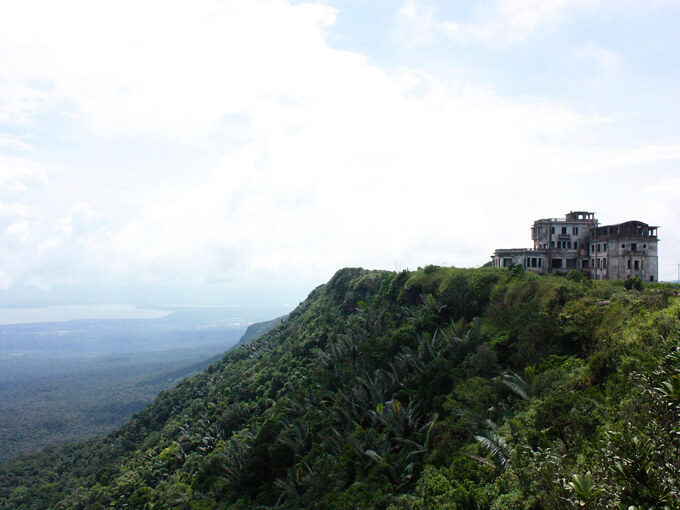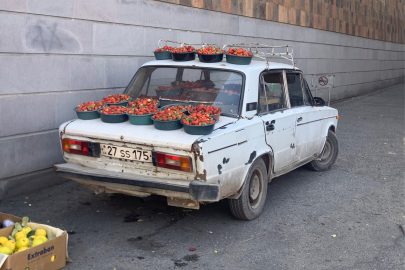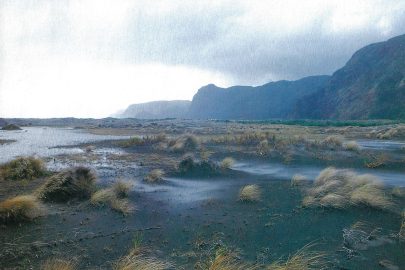Oct 19, 2018 Travel
It’s 40 years since the Khmer Rouge’s reign of terror in Cambodia ended, but beneath a shiny surface of modern capitalism, it’s feared the young democracy is sliding back towards dictatorship.
Those hilltop buildings are empty now, the concrete remnants stripped of everything that once made them luxurious retreats of the privileged. Occasionally, I glimpsed a worker high in a window, suspended on some precarious interior scaffolding, engaged in a half-hearted and under-manned attempt at restoration. Otherwise, it was all ankle-deep mud in the shade, dust in the sun, interior gloom in the tiny graffiti-riddled church, the scooters of tourists, and the company of ghosts.
Some 900 Khmer labourers died, mainly of malaria, during the construction of the original road that led up the hill to this little cluster of luxury. When the original beneficiaries of that work — the French — were ousted from Cambodia in 1953 with the advent of independence, it was soon the Cambodian elite sashaying through the grand ballrooms, worshipping in the church, and — wary of those who might compromise their access to this city on a hill — tossing suspected communists from that same cliff. The Khmer Rouge, when it took power, proved adept at mimicry; taking mirror-image revenge, they subjected perceived class traitors to that same fate. The Khmer Rouge held on to absolute power in Cambodia for just under four years, eventually forced out by Vietnamese troops, but pockets of the country remained loyal to its ideology for much longer. Bokor Hilarbitraryl was one of them, and it wasn’t until the early 1990s that the Khmer Rouge was truly ousted from this spot.
We rounded a bend to find a collection of scooters pulled over to the side of the road. A trio of young English women waved us down, asking frantically if we knew any first aid. A tangle of tyre marks tattooed the road and a fresh scar ran through the jungle, terminating in an upside-down bus almost hidden by foliage. Its windows were blown out and, on the ground around it, at least a dozen people — Vietnamese and Cambodian — lay writhing in pain, their groans hanging in the air. Another dozen or so luckier passengers squatted at the side of the road, surveying the scene with expressions born of shock. Still others reeled aimlessly on shaky legs.
The bus hissed threateningly as we did what we could in its shadow. An English nurse materialised and issued orders. I sat with one man whose forehead was bisected by a great furrow of recently revealed flesh. His eyes flickered, and it looked as though he might pass out; I had been told by the nurse to keep him awake. I poured water over his wound and dressed it with a towel, his groaning growing louder when I unknowingly placed my hand on his injured shoulder. We didn’t share a language, but I kept talking.
The hissing ended with a subdued explosion from somewhere within the bus’s interior. And, finally, our towels wrapped around wounds and our water donated, the nurse in control, there was nothing else we could do. We got back on our scooters and continued, slowly, down the hill, passing a wholly inadequate single ambulance heading towards the site of the accident as we neared Kampot, the city on whose outskirts we were staying.
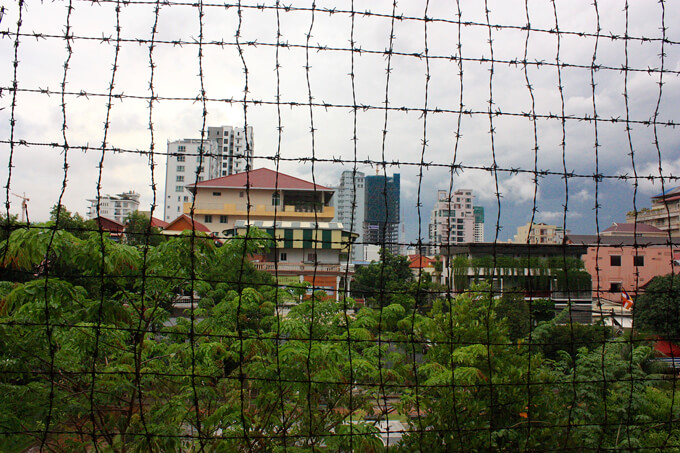
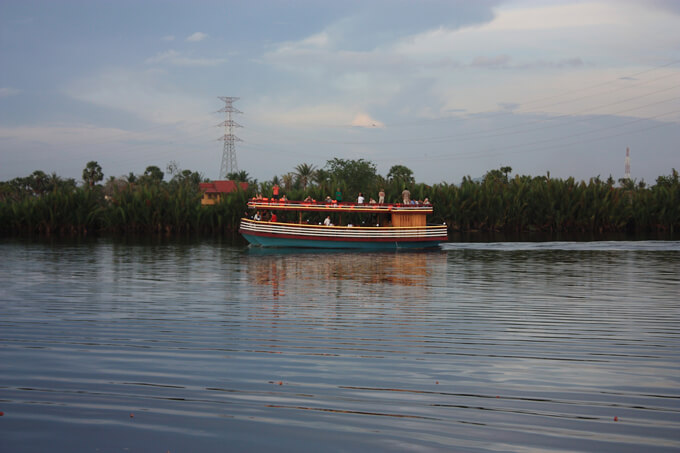
I would spend my time abroad cosseted in the kind of luxury I will almost certainly never again experience with anything approaching the same level of regularity. My journalist-wage wardrobe and scruffy weekend bag betrayed my station as I, an interloper in the domain of the international leisure class, shuffled around well-off guests in sumptuously carpeted hallways, and allowed my eyes to climb no higher than the lowest rungs of wine lists — booze not always covered by per diems — in unaffordable restaurants I was being paid to visit.
When people asked what I did for a living, I would say “travel writer”. But I always felt that answer only tangentially approached the truth. Paul Theroux, a master of the genre who has grumpily surveyed most of the globe, once wrote that “travel writing is a minor form of autobiography”, a form in which the author meets a place, like an eye-dropper of one chemical dropped into a beaker of another: the alchemy happens in the brain, and its formula is recorded on the page.
In much of contemporary travel writing — and, increasingly, in the “sponsored content” of journalism — economics tosses its own element into that equation. Hotels would put me up and restaurants would feed me “in exchange for an editorial mention” (read: a positive review), and tourism boards would pack my days with a fiendish number of activities, those itineraries coming preloaded with expectations of general editorial positivity.
“The postcard,” wrote Martin Amis (reviewing a travel book), “that tells of fine weather and good food is less fun to write — and to read — than the postcard that tells of missed connections, belly trouble, snatched passports and collapsing hotels.” Happiness writes white, as the saying goes — it’s misery that truly animates the page. And misery, or anything from its side of the ledger, isn’t available to the writer of a piece whose primary loyalties lie not with the reader but with an advertorial objective. The missed connections, the belly trouble, bad food and bad weather have no part in an article whose raison d’être is to make a location the next place you want to visit.
And so those observations that cast any kind of unfavourable shade were omitted. The extent, for example, of the crocodile-inspired dread I felt any time I stepped outside my car in the Northern Territory. The way a Vietnamese tour guide tugged on my sleeve as she guided me into the alley of a flower market — furtive glances cast left and right — to describe the dangers and inconveniences of living under one-party communist rule. How American tourists stood around looking dazed after being overwhelmed by evidence of the grisly extent of the horror of the Vietnam War at a particularly brutal Ho Chi Minh City museum. Naturally, there was no room for lengthy descriptions of traffic accidents. The obvious reason for my discomfort with that initial job description eventually crystallised: it wasn’t travel writing, it was tourism writing.
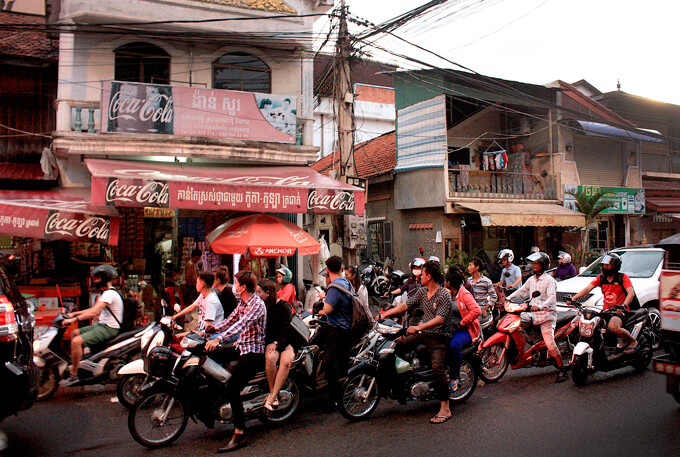
The young Cambodian woman in the bench seat behind leaned over to strike up a conversation. She introduced herself as Helen, and said she worked in marketing for a hotel in Siem Reap, in northwest Cambodia. Her forefinger was stained purple — proof that she had taken part in the elections held several days before. She had voted for the Cambodia National Rescue Party, against Prime Minister Hun Sen’s ruling Cambodia People’s Party: the country’s rampant corruption had been the issue on which she had made her decision. She told me that her family’s property had been stolen by an encroaching family that had turned up on the land, stayed, and then defended its right to do so in court. “Because they wear suits, and my dad wears a ripped shirt, the court talked respectfully to the other family. Shouted at my dad.” Young Cambodians, she said, hadn’t turned out to vote in the numbers she had hoped they would. She feared for the future of the country’s young democracy.
Hun Sen was once a member of the Khmer Rouge, before he escaped to Vietnam to help found a rebel force that eventually helped to topple the regime. As I write, I have an edition of the Cambodia Daily open in front of me. Page three describes Hun’s celebrations of the 40th anniversary of his defection, which took place the day before. He did so with a speech, delivered near the spot he crossed into Vietnam and aimed at his political opposition: “… your tongue is creating war,” the article quotes him saying. “As long as your tongue and your writing insult me, I say that Cambodia is still at war. Do not be reckless. The army is ready to crack down on any movement to overthrow and undermine the country.” And later, more ominously: “To protect the peace for millions of people, if necessary, 100 or 200 must be eliminated.”
We arrived in Phnom Penh. I spent a week or so in the city more than a decade ago, and it has loomed large in my imagination since. A beautiful lake — since reclaimed, with developments springing up on it — then sat in its centre, surrounded by guesthouses. This was the first place, outside an airport, I had ever been patted down for weapons; it was as I entered a nightclub called The Heart of Darkness. I remember elephants lumbering in the streets, the many-pointed splendour of the city’s temples, obscene amounts of marijuana, and motorcycle-taxi drivers who — after dark — always attempted to guide me towards the city’s seedier attractions. That is to say, the city had a wonderful sense of danger and escape. No matter how you had failed elsewhere, it seemed to croon, here is a place to hide, where an ambivalence to the law and some entrepreneurial acumen could lead you to some form of semi-legal success.
All of which is, I’m sure, still true. Along side streets between crumbling colonial buildings, in its corner noodle joints, where lizards scurry up the walls while moisture beads and runs down the bottles of Angkor beer placed in front of you as defence against the heat, it felt much the same place. Elsewhere, rising on a tide of Chinese and South Korean investment, grows a city of meretricious Trumpism: faux-gold apartment blocks and shopping centres tower over wide avenues, and exoskeletons of scaffolding cover those awaiting completion alongside the Mekong River. And then, elsewhere still, lies the true dark heart of the city, and country.
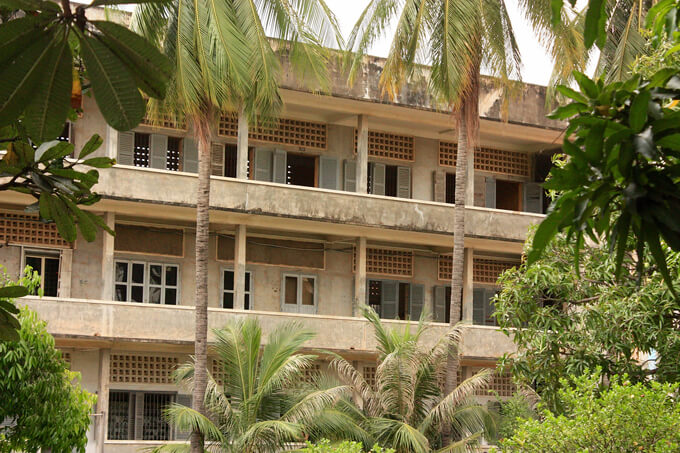
The Khmer Rouge rolled into Phnom Penh on April 17, 1975. Within 48 hours, they had cleared the city, sending its inhabitants to the provinces in an attempt to turn the country into a classless, agrarian paradise. Those deemed unfit for this step into the future — academics, teachers, anyone who spoke a foreign language, those with glasses — were eliminated. “Better to kill an innocent by mistake than to spare an enemy by mistake” was leader Pol Pot’s guiding philosophy, and his army of brainwashed, black-pyjama-clad teenagers turned his vision into reality.
A stupa packed with skulls stands at the entrance to Choeung Ek, reminding you of their success, the method of execution recorded in the blunt trauma visible on each. Some 20,000 people were killed at what is now a peaceful spot, where butterflies float among the trees and pagodas perch above ponds. But each new detail wrenches you from the present into the past: a mass grave where the remains of 450 bodies were found, a tree against which babies’ heads were dashed, a speaker hanging from a tree that plays the same revolutionary dirges once used to mask the screams.
And yet, this was only a tiny proportion of the suffering heaped upon the country. Over the three years, eight months, and 20 days the Khmer Rouge clung to power, some two million Cambodians perished—about a quarter of the population. In that respect, Rathanak told me afterwards over a plate of beef lok lak, his family had been exceptionally lucky. Poor farmers from the Svay Rieng Province in the southeast, not one member was killed — directly, at least — but the family were forced to march across the entire country, to Battambang Province in the northwest, near Thailand. After the Khmer Rouge reign ended, they returned home, passing through an empty Phnom Penh, where they could have picked from any number of houses still abandoned. “They just wanted to go back to their home town. And now we’re still poor,” he told me.
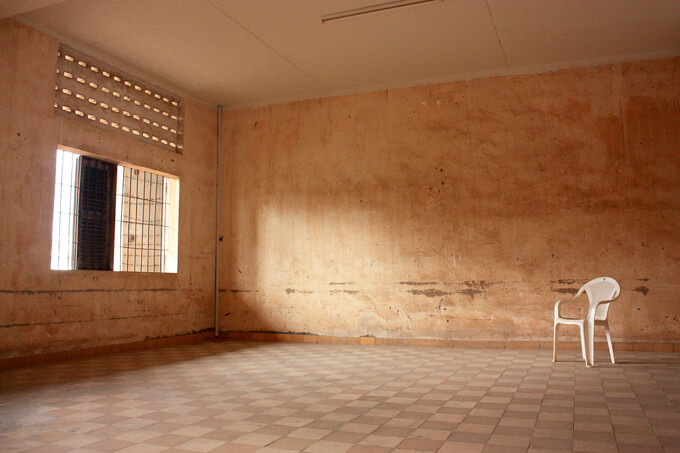
Of the many thousands who passed through its gates, only a handful survived. Mug shots of those who didn’t are now displayed in the former cells — the Khmer Rouge were meticulous documentarians. The faces show fear, sadness, confusion and defiance. You can’t help but then place those faces in the horrendous conditions described through the headphones — like something from Hieronymus Bosch, victims were subjected to the unanaesthetised removal of organs, simulated drownings, bludgeonings, electric shocks. Men, women and children were all tormented and then killed. “When pulling out weeds,” ran another Pol Potism, “remove them roots and all.”
And then, in the midst of this horror, a broad New Zealand accent cut through the commentary. Olympic rower Rob Hamill, whose brother Kerry was killed by the Khmer Rouge in 1978 after his yacht was blown into Cambodian waters, explained how his sibling had resisted horrendous torture before eventually giving a testimony laced with jokes and coded messages to his family: he wrote that Colonel Sanders was one of his superiors in the CIA and he used his home phone number as his supposed operative number. “It was as if, whatever the final outcome,” Rob later told a Cambodian court at the trial of the Tuol Sleng prison boss, “he would have the last say.” The combination of the familiar — the accent — and the utterly alien was profoundly moving: looking through the barbed wire and barred windows at the increasingly grey sky, I cried.
Confronted by the worst of what Pol Pot and the Khmer Rouge did to Cambodia, concern turns to its future. Hun Sen continues to consolidate his grip on power. The Cambodia Daily, the paper I took with iced coffee as part of my morning ritual every day in the capital, was shut down not too long after I had returned home, ostensibly for an unpaid tax bill. The move was almost universally seen as a politically motivated act, the stifling of an often-critical voice. Worse followed: the leader of the opposition Cambodia National Rescue Party was arrested in September, and his party was declared illegal, after allegedly planning to overthrow the government — a charge vehemently denied. The final front page of the Cambodia Daily ran with the headline: “Descent into Outright Dictatorship”.
The world was largely ignorant of the Khmer Rouge’s atrocities at the time they were taking place, with foreign journalists barred from entry and supporters like the Swedish Cambodian Friendship Association, which visited the country at the height of the terror, fooled into believing the Khmer Rouge were liberators, not fanatics.
If Cambodia is on a slide back to dictatorship, with talk of eliminations and war, hopefully at least this time the world will know — if, that is, journalists include the bad weather along with the good.

